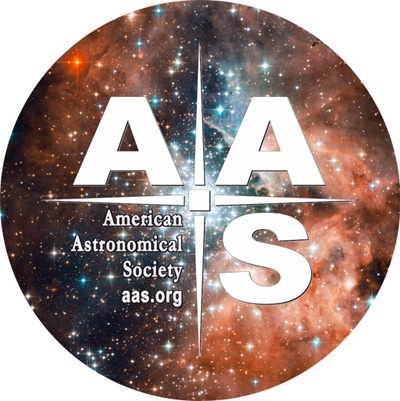29 April 2020
Susanna Kohler

Still from a simulation showing how black holes might interact in the chaotic cores of globular clusters. [Carl Rodriguez/Northwestern Visualization]
Before stellar-mass black holes merge in a spectacular burst of gravitational waves, they’re locked in a fatal dance around each other as a binary black hole. A new study uses clues from black hole spins to explore how these binaries came to be paired together in the first place.

The Hanford (top) and Livingston (bottom) LIGO facilities, which work together to detect gravitational-wave signals. [Caltech/MIT/LIGO Lab]
To Build a Binary
With ten detections of merging stellar-mass black holes made by the LIGO/Virgo gravitational-wave observatories in just their first two observing runs, these detectors have opened a new window through which we can study the evolution of massive stars.
Among the open questions we hope to answer with these and future detections is the following: How were these binary pairs of stellar-mass black holes created? There are two main formation channels proposed:
1.Field binary evolution
In isolation in the galactic field, the two members of a binary star system independently evolve into black holes, and they remain bound to each other through this process.
2. Dynamical assembly
Black holes are formed independently and then sink to the centers of high stellar density environments like globular clusters. There, dynamical interactions cause them to pair up and later get ejected from clusters as bound binaries.
Recent research suggests a combination of these two channels is likely at work to produce the black hole binaries we’ve observed. But what fraction of the LIGO/Virgo binaries are created by each channel?
A new study by scientist Mohammadtaher Safarzadeh (Center for Astrophysics | Harvard & Smithsonian; UC Santa Cruz) explores this so-called branching ratio.

By now iconic illustration of a pair of black holes with misaligned spins. [LIGO/Caltech/MIT/Sonoma State (A. Simonnet)]
Spinning an Origin Story
Safarzadeh relies on one primary clue: black hole spin. Due to conservation of angular momentum, black holes binaries that form via isolated evolution are likely to have positive black hole spins — the spins of the black holes will be in the same direction as the orbital rotation of the binary. In contrast, the chaos of dynamical assembly should result in binaries with randomly distributed spins.
Safarzadeh statistically models two populations of black hole binaries produced by these two formation channels and compares this model to LIGO/Virgo’s 10 observations of mergers from their first two observing runs. He’s careful to also take into account LIGO/Virgo’s observational biases — the detectors have an easier time observing binaries with positive effective spin.

The author’s calculated posterior distribution on the parameter Q, the ratio of field binaries to the total number of observed black hole binaries, shows that contribution from the dynamical channel is more than 55% with 90% confidence. [Safarzadeh]
Dynamics Weigh In
The result? Safarzadeh estimates that the contribution of the dynamical assembly channel to the total population of binary black holes is more than 55%, with 90% confidence — which means that random pairings of black holes in the chaotic centers of dense star clusters likely dominate the population of black hole binaries we’ve observed.
This outcome can be further refined as we increase our observed sample size — LIGO/Virgo’s third observing run, now being analyzed, is expected to contain perhaps dozens of additional systems, and future detections will hopefully add many more binaries to the list!
Citation
“The Branching Ratio of LIGO Binary Black Holes,” Mohammadtaher Safarzadeh 2020 ApJL 892 L8.
https://iopscience.iop.org/article/10.3847/2041-8213/ab7cdc
See the full article here .

five-ways-keep-your-child-safe-school-shootings
Please help promote STEM in your local schools.

AAS Mission and Vision Statement
The mission of the American Astronomical Society is to enhance and share humanity’s scientific understanding of the Universe.
The Society, through its publications, disseminates and archives the results of astronomical research. The Society also communicates and explains our understanding of the universe to the public.
The Society facilitates and strengthens the interactions among members through professional meetings and other means. The Society supports member divisions representing specialized research and astronomical interests.
The Society represents the goals of its community of members to the nation and the world. The Society also works with other scientific and educational societies to promote the advancement of science.
The Society, through its members, trains, mentors and supports the next generation of astronomers. The Society supports and promotes increased participation of historically underrepresented groups in astronomy.
The Society assists its members to develop their skills in the fields of education and public outreach at all levels. The Society promotes broad interest in astronomy, which enhances science literacy and leads many to careers in science and engineering.
Adopted June 7, 2009
